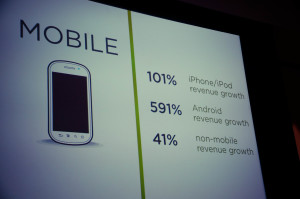Category: Uncategorized
July 21st, 2014 by Elma Jane
European authorities dismantled a Romanian-dominated cybercrime network that used a host of tactics to steal more than EUR2 million. As a direct result of the excellent cooperation and outstanding work by police officers and prosecutors from Romania, France and other European countries, a key criminal network has been successfully taken down this week.
Hundreds of police in Romania and France, backed by the European Cybercrime Centre, carried out raids on 177 addresses, interrogating 115 people and detaining 65. Those held are suspected of participating in sophisticated electronic payment crimes, using malware to take over and gain access to computers used by money transfer services all over Europe. They are also accused of stealing card data through skimming, money laundering and drug trafficking.Proceeds of the crimes were invested in different types of property, deposited in bank accounts or transferred electronically, says the EC3. Large sums of money, luxury vehicles and IT equipment were seized during the raids.
Posted in Uncategorized Tagged with: accounts, bank, bank accounts, card, card data, cybercrime, data, electronic payment, host, Malware, money transfer, network, payment
July 15th, 2014 by Elma Jane
Businesses only stand to benefit by making themselves accessible via mobile devices. With a mobile website or mobile app, businesses can boost sales, retain loyal customers and expand their reach. The question is, which type of mobile presence is best for your business Or should you have both? Both mobile websites and mobile apps let customers find and access your business from devices they use the most, but a mobile website and mobile app are not the same thing. To help you decide, check out the differences between the two and how they can benefit your business.
Mobile App – is a smartphone or tablet application. Unlike a mobile website, a mobile app must be downloaded and installed, typically from an app marketplace, such as the Apple App Store or Android’s Google Play store.
Mobile Website – is designed specifically for the smaller screens and touch-screen capabilities of smartphones and tablets. It can be accessed using any mobile devices Web browser, like Safari on iOS and Chrome on Android. Users simply type in the URL or click on a link to your website, and the website automatically detects the mobile device and redirects the viewer to the mobile version of your website.
Mobile website’s benefits
The primary benefit of a mobile website is that it makes regular websites more accessible for mobile users. It can have all the same elements as the regular version of the website, such as its look and feel, pages, images and other content, but it features a mobile-friendly layout that offers improved readability and functionality when viewed on a smartphone or tablet. By having a mobile website, customers can access your website anytime, anywhere using any device, without compromising the user experience.
Mobile app’s benefits
Although a mobile app functions a lot like a mobile website, a mobile app gives businesses the advantage of having their own corner on a customer’s device, because users have to download and install the app, businesses have more control over their presence on a device than they would with a mobile website. For instance, a mobile app can be closed or inactive, but still work in the background to send geo-targeted push notifications and gather data about customer’s preferences and behaviors. Moreover, mobile apps make it easy to deploy loyalty programs and use mobile payments using a single platform. It’s also much easier to access a mobile app than a mobile website all it takes is one tap, versus having to open a Web browser then type in a URL.
Mobile website and Mobile app features
Although mobile websites and mobile apps aren’t the same thing, they generally offer the same features that can help grow your business by making it easier for customers to find and reach you.
Features include the following:
Click-to-map: Users can use their devices’ GPS to locate your business and instantly get directions, without having to manually input your address.
Mobile commerce: Take your online store mobile with e-commerce-capable mobile websites and apps, such as with Buy Now buttons and mobile carts.
One-click calling: Users can call your business simply by tapping on your phone number from your website or app.
Social sharing: This feature integrates social media apps and websites to enable users to easily share content with friends and followers.
Mobile marketing: This lets users sign up for marketing lists and loyalty programs while enabling businesses to easily launch location-based text-message marketing and email marketing campaigns.
How to build a mobile app
Just like the options available for building a mobile website, businesses can either hire an app developer to build a mobile app or take the budget-friendly DIY mobile app maker route.
How to build a mobile website
To build a mobile website, one option is to hire a mobile Web developer to create one from scratch or convert an existing website into a mobile-friendly one. A more affordable option is to build one yourself with a free DIY mobile website builder, which uses a drag-and-drop platform that doesn’t require programming or Web design skills.
Posted in Uncategorized Tagged with: Android's Google Play, Apple App, Chrome, customers, data, devices, e-commerce, email marketing, GPS, iOS, mobile, mobile app, mobile carts, Mobile Devices, mobile website, platform, programs, Safari, smartphone, tablet, URL, Web browser
July 15th, 2014 by Elma Jane
There is a big difference between finishing first and second in sales. First-place finishers make the sale and pocket the money, while second-place finishers leave empty-handed. Winners sell radically differently than second-place finishers. Winners exhibit a specific combination of behaviors to achieve better outcomes than other sellers. The way winners sell can be characterized by specific behaviors at three different levels.
Specific behaviors at three different levels and how sales professionals can incorporate them into their current strategies.
First Level – CONNECT
Winners connect in two ways: 1. They are more effective at connecting the dots between customer needs and their company’s products and services as solutions. 2. Winners connect with people. Buyers believe that winners both listened to them and connected with them personally more often than the rest. Connecting with people and connecting the dots sounds a lot like relationship and solution selling to us. Connecting with buyers on both levels is still absolutely critical to winning the sale.
Second Level – CONVINCE Winners convince buyers that they can achieve maximum return, that the risks are acceptable and that the seller is the best choice among all options. Many sellers are not good at convincing buyers, and large portions of sellers aren’t even willing to convince. When they can and do, they win more sales.
Third Level – COLLABORATE Winners are collaborative in how they work and what they do. They are perceived by buyers to be responsive, proactive and easy to buy from, and buyers believe winners actually collaborate with them during the buying process by working with them to achieve mutual goals. Buyers perceived collaborative sellers to be integral to their success.
Those who apply these three levels as a systematic approach to selling and apply it well not only see themselves in the winners circle more often, but also maximize client loyalty and generate the most referrals.
In addition to determining the three levels of sales, also studied those factors from the buyer’s perspective, that most separated winners from second-place finishers. They discovered that out of 42 factors, the one that most separated winners from second-place finishers was this: Educated me with new ideas and perspectives. By educating buyers with ideas, winners share concepts and insights that can have a major impact on the buyer’s goals. This is called opportunity insight. Buyers typically don’t know alternative opportunities exist until sellers take the time to share them, but once they do, it influences the buyer’s agenda for action, that doesn’t mean sellers should just throw ideas out left and right and see if something sticks, but that they essentially need to transfer their drive, passion and energy for the possibilities to their buyers’ minds. While there has been a shift in the way buyers buy, the fundamentals that have been true for decades are still necessary. However, sticking to the basics isn’t enough to win sales. To win today, you must also focus on differentiation, ROI and collaboration. Do so while leveraging ideas and you’ll win significantly more often.
Posted in Uncategorized Tagged with: buyers, sales, sellers
June 30th, 2014 by Elma Jane
The best way to grow your business is to grow your customer base, but finding the time to round up new customers can be a challenge. What time-strapped business owners need is a strategy that lets them attract more customers without logging in more hours at work.
Here are steps that will allow any small business to set up a marketing system in a hurry.
Address specific concerns – Businesses also have to have a component in place that tracks customers who don’t opt in for a free consultation or other service right away. If someone does not sign up to discuss your services, then you need to prepare a series of messages that addresses their specific concerns, along with the call to action that repeats the offer of the free consultation. If repeated messages don’t inspire a customer to buy what you’re selling, you still get to add another name to your weekly newsletter or list of potential leads, which you can come back to later. To make follow-up messages and further communications most effective, using a tone that is a mix of personal and professional. In other words, don’t be too formal, but do make sure you explain why your business is worth patronizing.
Get to know your customers – Most of us who have been in our respective businesses for any length of time know the fears, hopes, dreams and aspirations of our clients. If you don’t do a great job of communicating benefits to prospective clients based on what you know they want, then your prospects won’t be willing to spend even a dollar. Knowing what concerns and challenges your prospects face should be at the heart of your business marketing strategy. Once you have this information, you can use technology, sales and marketing software for small business to create a powerful and intelligent marketing funnel system.
Prepare effective content – Once your prospective customers have completed your short survey, they’ll be entitled to the information they came to your site to receive. To effectively engage these customers, preparing a video based on each of the answers customers might have chosen during the survey. What kind of video you produce is up to you, but there are two main types: “The talking head and the narrated PowerPoint”. As you might guess, the talking head video is preferable, since it enables prospects to get a sense for who you are as a person. Next to seeing you live, it’s the next best thing. When it’s done right, it’s very effective. If you’re uncomfortable in front of the camera, you might want to opt for a narrated PowerPoint or Keynote for Mac users presentation. It’s not quite as effective in building rapport as the talking head video, but prospects will pick up a lot of your personality simply by hearing your voice. Regardless of which format you use. Keeping each video under 10 minutes and using the opportunity to really provide prospects with valuable information like a useful tip, perspective or idea. At the end of the video should be a call to action to go to a specific page on your website that offers a free consultation.
Start with a survey – Any marketing funnel begins with the challenge of how you get people to enter it, adding that small business owners can attract prospective clients by offering worthwhile information that their customers want access to, preferably in the form of videos, articles or other easily digested media. Once a prospect opts into receiving free content, it’s the businesses turn to find out more about who that customer is and what they need. One way to do this is to ask visitors to your website to complete a simple one-question survey. The survey you build should be based on the three to four biggest challenges you know your customers face, which is why step one “getting to know your customers” is so important. To create a survey that will point prospective customers in the right direction, you have to ask the right questions.
Posted in Uncategorized Tagged with: customer, customer base, free consultation, Keynote, leads, marketing software, marketing system, newsletter, PowerPoint, prospects, software, survey, technology, website
June 23rd, 2014 by Elma Jane
Effective leaders can achieve better results in both their professional and personal lives by making a simple shift in their approach to leadership. The shift involves seeing one’s self not as a manager, but as a servant. Though it might sound counter intuitive, learning how to obey and follow, today’s business leaders can hold greater sway over those they’re positioned to lead. Clearly, We need to set clear expectations for excellence and let people know that they will be held accountable to those expectations. However, leaders who make serving and caring for the people they lead a higher priority than what they can get out of them typically end up getting better results than those who take the opposite approach.
Adopting a servant leadership approach can improve any business’s bottom line.
Achieving (a different kind of) success
Being a servant leader simply means that serving and caring for people is higher priority than profit. The servant leader knows that this change in priority is actually the best way to ensure long-term growth and profitability. Shifting the priority of your business away from profit means establishing different criteria for success. Success through the servant leadership lens, can be assessed by answering these three questions:
How much are the people I lead growing, both professionally and personally, as a result of being on my team?
How much do the people I lead enjoy coming to work each day?
How well am I empowering the people on my team to be servant leaders?
Building a strong culture
When we create a team culture where serving each other and the community around us is valued as more important than profit, we give the people we lead the gift of being part of an inspiring organization that people want to be a part of and don’t want to leave. This is why a relatively unknown company is able to attract roughly 18,000 people to apply for 35 positions, a hire rate of 0.2 percent. It’s also why turnover is around 1 percent, versus the industry average in the tech space of 22 percent.
Gaining purpose
Imagine that your purpose for coming to work isn’t just to be a manager and accomplish business objectives. Imagine that your main purpose for coming to work is to create a team of awesome human beings of high character, who are devoted to serving and caring for the people around them. This makes Mondays just as happy as Fridays. It makes coming to work something deeply meaningful and inspiring.
Improving customer service
When we model empathy, compassion and helpfulness, we create a culture that is likely to deliver world-class service to our customers. This is why companies work so hard to develop servant leaders who treat employees with such high levels of care.
Increasing innovation
When we create an atmosphere of safety, where people aren’t afraid to take risks and challenge the status quo, we create a culture that is highly conducive to innovation. This is why the most innovative companies like Google and SAS go to such lengths to care for employees and are also consistently rated as the best places to work.
Posted in Uncategorized Tagged with: google, innovation, SAS
June 23rd, 2014 by Elma Jane
How online payments can help improve health care efficacy? 76 percent of providers said that it took more than one month to collect from a patient. However, patients have made it clear that they prefer to have the option of making payments online. Consumer responsibility is also increasing, but many providers still rely on paper-based, manual payment collection and posting processes. As a result of waiting for those payments, providers are spending more money and more time to collect, yet still accumulating a large amount of bad debt.
The majority of providers 76 percent did say that they offered the option of online payments to their patients. As providers and their clients increasingly rely on consumer payments for revenue, many have started to use more consumer-centered strategies, like payment plans, to collect payments. However, they will have to implement best practices and policies, including automating payments and communications and ensuring payment data is secure, to improve collection processes.
Posted in Uncategorized Tagged with: consumer, health care, online payments, payment data, payments, provider's
June 20th, 2014 by Elma Jane
The LinkedIn Job Search App available exclusively for iPhone for now, launched today with new tools for job seekers. LinkedIn is already one of the best spots on the Web to network and establish new business contacts and now with a new app designed to help you get hired. The app includes a deep search function to help you find the most relevant job openings. You can tailor your search to filter results by title, location, company, industry, seniority level and more. That could help you spend more time applying for jobs and less time browsing irrelevant posts.
Another handy feature lets you browse jobs LinkedIn recommends for you based on your saved searches, jobs you’ve viewed and information pulled from your LinkedIn profile. This could help ensure you won’t overlook a listing and miss a good opportunity. The feature also helps you browse job posts on your iPhone when you have just a few seconds or minutes to look, but what really sets this app apart from similar job search apps is its integration with LinkedIn. That means you can instantly view information about a company with just a few taps and because virtually every company and business owner has a presence on the social networking site, you’re sure to find information that will help you evaluate a job opening. You’ll even get alerts on your LinkedIn profile when recruiters view your application, taking a bit of uncertainty out of the job search process.
Posted in Uncategorized Tagged with: app, Iphone, linkedin, network, networking, tools, web
June 17th, 2014 by Elma Jane
Sales is like acting: You may have something great to offer, but no matter how hard you try, some people just aren’t going to like it. Just as actors don’t nail every audition, a salesperson won’t close every deal or chase down every lead. Dealing with this kind of rejection day after day can really wear your sales team down if they don’t have the right mindset.
One of the most crucial skills you can help your sales team develop is the ability to effectively manage adversity and overcome rejection through the power of positive thinking. With rare exceptions, a salesperson faces more losses than wins. As a sales team leader, you’ll need to find a way to keep your group motivated and focused on overcoming the many obstacles they’ll face in the course of cold calling and pitching proposals.
Inspiring optimism in your sales team isn’t always easy, but you can do it with the right techniques.
Encourage team members to share success stories. Gather the team and have all sales people share stories about how they overcame obstacles and reversed setbacks. By learning how other team members succeeded after initial adversity, sales professionals can learn to be more optimistic in their own thoughts. You can also review one of the most impressive wins your team had for the quarter and outline what enabled that sales representative to win the deal. This is a great way to build confidence in the company’s product and service, and do some team building at the same time.
We’re not 100 percent in control of our circumstances, but we can control the attitude with which we confront them. A prospect can tell in just a few minutes if you are confident and passionate about what you are selling and if you are prepared. Your confidence often breeds confidence in the prospect, which more often than not leads to winning the sale. By choosing to see the glass as half full, we can position ourselves for greater success.
Meet one-on-one with your sales staff. It’s important that your sales team recognizes the direct connection between their attitudes and their results. As a leader, you can help by assessing individual performance and talking through how each person’s perceptions affect his or her results. Different techniques will appeal to different individuals, so it’s best to take a personalized approach.
Retrain worn-down employees. Constant rejection when making a few dozen calls a day can take its toll on even the most optimistic person. The first sign that sales representatives are struggling comes when they claim that the product is too expensive or does not provide the functionality customers are looking for. Those sales people then expect rejection from every additional call. This may mean they require more training on what differentiates the product from the competition. If this is the case, it’s best to get those representatives off the phones and into a training session, where you can fine-tune their approaches and rebuild confidence.
Posted in Uncategorized Tagged with: customer, lead, product, proposals, sales, Sales Representatives, sales team, salesperson, training
June 13th, 2014 by Elma Jane
Specifically, 55 percent of those who have a workplace rivalry said it has created undue stress and reduced their productivity, while 20 percent said it has gotten them into trouble with management. Just 6 percent of those surveyed said competing with someone in the office inspires them to do their best work. Some rivalries get so bad that employees look for work elsewhere. Nearly 30 percent of those surveyed have considered leaving their jobs because of office rivals. The majority of U.S. workers say the competition they have with co-workers or bosses has hurt their job performance.
Employees named a few ways they deal with a workplace rival that causes them stress, including working hard and focusing on their goals, talking about the situation with their managers, and learning new skills to outshine the competition. Since companies work hard to hire the best talent available, rivalries are bound to occur when similarly skilled and motivated individuals work together. However, office competition doesn’t have to harm a workplace. Balance is key. Let workplace competition motivate you to perform your best, but don’t get distracted by jealousy. Counter competitive tensions by finding common ground through sports, shared hobbies or just having a drink after hours. If you can’t get the tension under control, find ways to distance yourself from your adversary. Explore your options from switching desks to switching companies,and remember that living and working well is the best revenge.
Posted in Uncategorized
June 12th, 2014 by Elma Jane

About 5.5 million family-owned businesses operate in the United States, according to Family Enterprise USA. The secret to their success? It just might be the family aspect that makes these organizations thrive.
The business world knows that if you take care of the customer, the bottom line will take care of itself. Family-run businesses take it a step further, if you take care of your employees and treat them like family, they will take care of your customer and treat them like family. The business will thrive with loyal patrons and employees and continue to grow and be profitable even during tough times.
What truly drives many family businesses is the sense of connection and identity the owners and their family members feel with the business.
In family businesses, the founder and employees have an incredible passion for the business, a focus and energy that you’ll never find in a non-family employee. They’re so focused on the business’ success that it’s part of their identity. The business isn’t the life of non-family employees. In general, they won’t identify themselves with the business being part of who they are the way family members do. Non-family businesses can learn a valuable lesson from this family business attitude.
The core values of a family-run business are based on the core values of family life. Every member of a family is there for the other members in their time of need, no matter how big or small that need is. A non-family business can benefit from applying family values to their operations by creating a culture that has people wanting to work harder for them because they feel like family not a number.
A family business attitude makes all employees feel like part of the business. You watch out for each other and make sure all customers are treated the same every day, every time, by everyone. Like family. A dad expected more from a family than the employees because they had to lead by example and being more than just an employee working a job. Family is expected to do more and be better. That behavior flows into all employees and helps meet daily goals.
Despite the strong company culture typically found in family businesses, not all of them succeed: Thirty percent of family-owned businesses are passed down to the next generation, and only 12 percent remain viable into the third generation. A recent TAB survey found that lack of succession planning is one common reason that family businesses fail to stay within the family. Twenty-nine percent of business owners do not have a succession plan. Without one, it’s easy to understand how owners of family businesses can lose the legacy they’ve worked so hard to build.
Family business succession also faces the issue of a lack of training. Although 45 percent of owners say their children are involved in their business, 62 percent say it’s unlikely their business will remain family owned when they sell or retire.
A lack of confidence in leadership abilities could account for this gap. Training family members early and thoroughly can go a long way in building that necessary confidence. The perceived special treatment of related employees and the mixing of family and work issues can also cause points of contention in a family business setting. To ensure the success of any family members hired, family business owners should operate with a certain level of objectivity. If you bring a family member into the business, get them to work outside the company first. Make him or her learn how to take direction from others, so the family dynamic is neutralized. If spouses work together, make sure your roles are separate. Don’t discuss family matters at work or work matters at home.
Posted in Uncategorized Tagged with: business world, company culture, customer, loyal patrons, organizations









